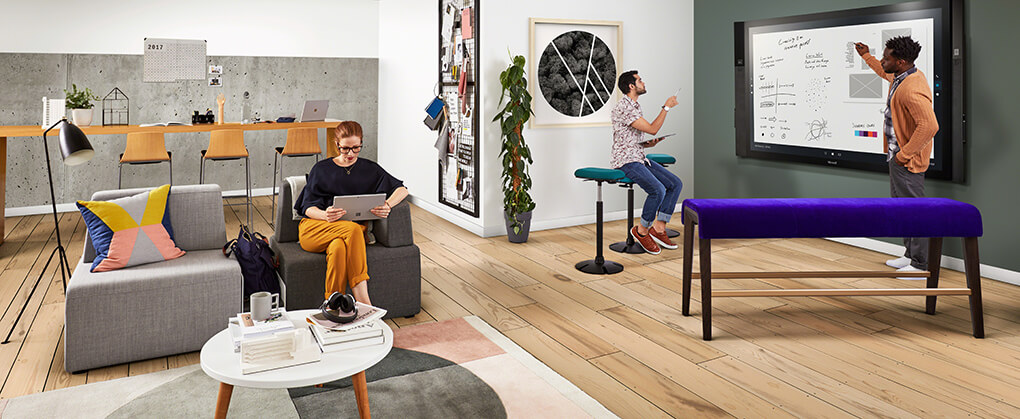It’s the year 2023 and we are done with over-populated offices where everyone has their own corner and works under artificial light against a grey background. And rightly so.
But not all the interventions are suitable for every contemporary office and not everything is accepted and welcomed by everyone. Take flexible workstations, for example. Although they are the current trend and some teams work better as a result, there are also many employees who are less enthusiastic and find that their productivity decreases. We have set out the advantages and disadvantages so you can figure out whether flexi-workstations will be right for your company.
What are flexible workstations or ‘hot desks’?
Flexible workstations are a fairly recent phenomenon; a by-product of the hybrid working trend where employees sit where they want, without having their own desk. Everyone simply grabs a free desk, where they have very few or no personalised features at all. Flexi-workstations are the opposite of fixed workstations, the more traditional variant where team members can leave their items behind and brighten up their desks with photos and other decorations.
The benefits of flexible workspaces
Getting rid of fixed workstations: there are some advantages…
More options for collaboration
If employees sit where they like, they can work near a team member with whom they are collaborating at that moment, or to whom they need to talk. It goes without saying that this will support relationships between colleagues.
A tidier working environment
Flexible workstations go hand-in-hand with a ‘clean desk policy’ and that means offices stay tidier. Employees only move what they really need to their workstations and store their equipment in lockers at the end of the day or take everything home with them so they can work from home. Fixed desks, by contrast, encourage people to leave ‘stuff’ lying around and this can end up looking messy. And what’s more, an empty workspace is better for concentration.
You save money
Nowadays, very few employees find themselves in the office for the standard working week. So, many of the fixed desks are left empty for days. Thanks to flexible workstations, a relocation to a smaller office is an option and this system is also synonymous with savings. For ‘hot desks’, you need less equipment, such as computer screens and office chairs.
The disadvantages of flexible workspaces
Let’s be honest, there are also a few disadvantages to flexible workstations.
Not always the right materials
Employees who need specialised equipment or large-scale items to carry out their job do not benefit from flexi-workstations. If you have to manhandle a scanner before you start your day, it’s not going to put you in a good mood or improve your efficiency. And what about those who need to use a printer all the time? They would rather not have to walk around the whole office every time they need to collect a print. Moreover, you save time with fixed desks because you don’t have to reset your desk or chair each time you use it (ergonomic health and safety).
A lack of stability
One employee may find it more important than another but you must not overlook the fact that a fixed desk offers a sense of stability which is not experienced by employees who have to set up their laptops in different locations every day. If all your colleagues have their own space, you also avoid any arguments about who has the best spot. After all, nobody wants to sit next to the kitchen, where plates are always clattering and your colleagues are constantly chatting.
A disruptive factor
Finally, the hunt for a desk can also create extra movement and noise. The later starters, for example, will disrupt the team leaders who are already stuck into their work and trying to concentrate.
We can help you choose
Can we help you make the choice between flexi-workstations and fixed desks when designing your office? Let us know.




